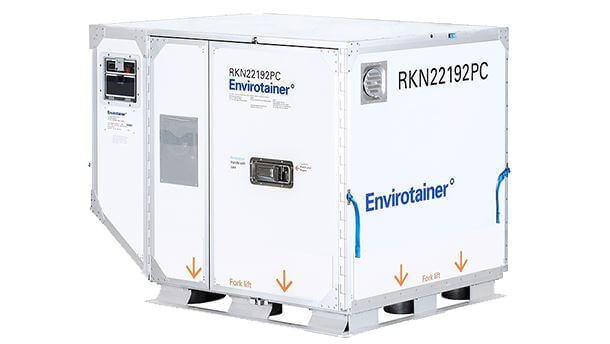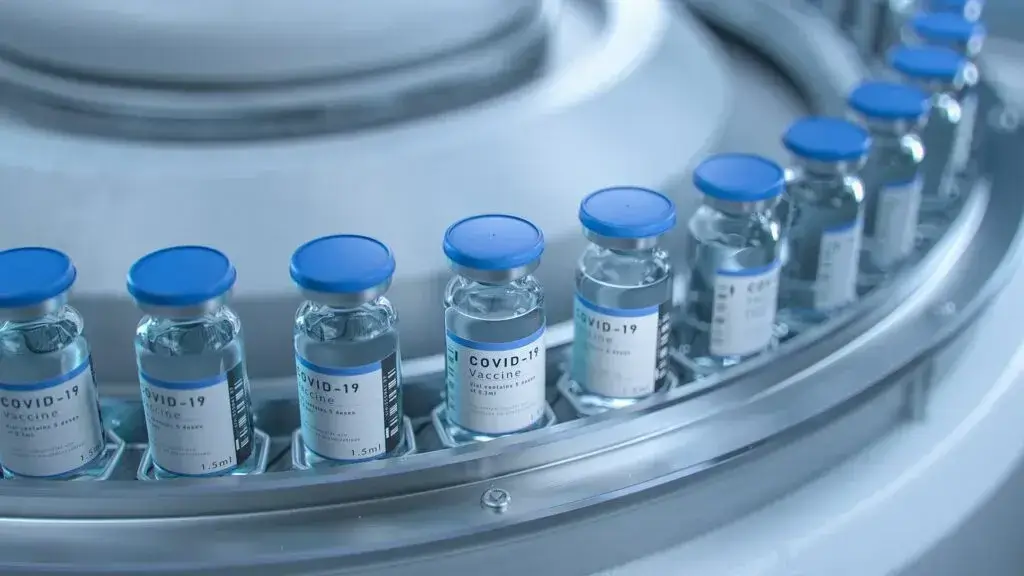
Would you be interested in learning about the various cold chain packaging systems? To get you started, consider this list of cold chain packaging systems
The area of life sciences is prospering in an era of unheard-of scientific progress, developing novel treatments for diseases that were once incurable and fundamentally altering our knowledge of biology. The careful handling and shipping of temperature-sensitive goods is important to these advancements, making cold chain packaging solutions a vital part of the sector. Choosing the best temperature-controlled packaging solution has grown more difficult and important as there are more packaging alternatives available.
Choosing the best packaging option is a crucial choice that can affect the effectiveness and safety of the items being carried in the field of life sciences logistics. The selection of packing has implications for the effectiveness and integrity of the items being sent that go beyond simple convenience, thus it must not be made carelessly.
We will dig into the complex world of cold chain packaging systems in this post, illuminating the active, passive, and hybrid solutions as the three main types.
What is Cold Chain?

A cold chain is a network of temperature-controlled facilities used for production, storage, and distribution that is supported by equipment that can reliably maintain the required low temperature range. However, it is far more intricate than it seems.
For instance, from the moment they are made until they are utilized, certain vaccinations require a consistent temperature range. The criteria is so tight that the vaccine may lose its effectiveness and become useless if the temperature veers off course, even for a little period of time.
What is Cold Chain Packaging?

Cold chain packaging is an essential part of temperature-controlled shipping since it serves as the initial line of defense for perishable goods. Products are susceptible to severe ambient temperatures without the proper cold chain packaging solutions, particularly if the refrigerated storage or transport equipment malfunction.
The best cold chain packaging solutions frequently eliminate the need for pricey refrigeration equipment.
Types of cold chain packaging
Active, passive, and hybrid are the three primary categories of cold chain packaging technologies.
Active Systems
The closest analog for active containers is a refrigerator. To keep product temperatures consistent, they employ thermostatic control in conjunction with mechanical or electric devices that are driven by an energy source. Systems frequently need “plug in time” to charge at crucial touch points and before usage.
A closed-loop distribution system is necessary for active systems in order to guarantee proper maintenance and recycling of reusable equipment. Despite providing accurate temperature control, these systems are expensive to buy, operate, and maintain. Due to their weight, potential need for repair while in route, and availability in fewer sizes than other shippers, they are also more expensive to ship.
Passive System
Insulating materials are used in passive cold chain packaging to shield items from ambient temperatures. Polyurethane (PUR), paper and paperboard and expanded polystyrene (EPS), as well as jute, fiberglass, cloth, polyethylene, and silica, are a few materials used in cold chain packaging. Phase change materials (PCMs) are also used by cold chain package producers in addition to insulating materials to maintain constant low temperatures.
According to laboratory research, passive cold chain packing may sustain low temperatures for delivery times of up to 96 hours or even longer than active approaches. Additionally, compared to active techniques, passive cold chain systems may maintain tighter temperature control across a larger temperature range.
The risk of rotting exists if a cargo is delayed and the transportation duration exceeds the packaging’s capacity to maintain temperature control, while being substantially more affordable than refrigerated units. Visit our product website for additional details about our passive systems.
Hybrid Systems
Active systems and hybrid systems are comparable, however hybrid systems also include a phase change material (PCM) bunker. Whenever the system is not being charged by a power source, the active component of the system charges a “PCM battery” that is utilized instead.
Many of the benefits and drawbacks that active systems have are also shared by hybrid systems. Hybrid shippers, however, have fewer parts that can need upkeep.
Examples Cold Chain Packaging Solutions
Active cold chain packaging
- Highest price
- Highest degree of temperature precision
- High dependability
- No possible bespoke sizes; just standard/off the shelf sizes
- Simple to use
Examples of active cold chain packaging include the following:

To satisfy the needs of the pharmaceutical business for smaller shipments, the Envirotainer RKN e1 is a single pallet size container with an active temperature control system, compressor cooling, and electric heating technology.
The RKN e1 container keeps products at defined temperatures between 0 and +25 °C, regulated room temperature (+15 to +25 °C), or in the +2 to +8 °C range.
It responds to your unique transportation needs and provides compressor cooling and electrical heating to ensure the best cargo conditions.
Rechargeable batteries, which are simple to reload at regular AC power outlets and offer a dependable and sustainable power supply, are one of its notable features. Improved air circulation is ensured to keep the cargo space’s temperature gradient at its appropriate level.
Passive cold chain packaging
- Cheapest price
- The least accurate thermometer
- High dependability when using the right techniques
- Tooling may not be necessary for standard, off-the-shelf, and bespoke sizes
- Phase Change Materials must be prepared before usage
Phase Change Materials must be prepared before usage.
Examples of passive cold chain packaging include the following:

Insulated panels (VIP) and Phase change materials (PCM) combine to provide CoolGuardTM Advance, a breakthrough in temperature-controlled transportation. The length of protection is increased to an amazing 72 to 120+ hours thanks to this potent combination, which makes sure that each shipping container turns into a haven of temperature stability. For businesses where maintaining the integrity of items, such as keeping pharmaceutical and biotechnological materials, is non-negotiable, this expanded window of temperature stability is a key characteristic.
The high-performance VIP and PCM technology at the core of CoolGuardTM Advance not only minimizes temperature excursions but also strengthens compliance with strict regulatory requirements. As a result, there is an optimum low total cost of ownership since there are fewer excursions, which means there is less chance of product loss and more expensive regulatory fines.
Hybrid cold chain packaging
- Moderate to expensive
- Moderate to high precision for temperature
- Modest dependability when following the right processes
- No possible bespoke sizes; just standard/off the shelf sizes
- The need for phase change material conditioning adds complication
Examples of hybrid cold chain packaging include the following:

The Envirotainer RKN t2 is a dry-ice-cooled, one (1) pallet size container that offers dependable protection for transportation of temperature-controlled goods at a reasonable price.
It may be used for ordinary and deep-frozen shipments because to its modest size and durable construction.
With a 2.93m3 inside volume, the Envirotainer RKN t2 may be forkedlifted.
Cold chain packaging: advantages and disadvantages

The benefits and drawbacks of each form of thermal packaging technology are briefly discussed in the section that follows, organized by characteristic.
Size availability: Compared to passive shippers, active and hybrid shippers are available in a smaller range of payload sizes due to their higher complexity and expense.
Cost: When compared to passive shippers, active and hybrid shippers are often more expensive due to their greater complexity.
Temperature precision: Active shippers have the best temperature precision, followed by hybrid shippers. The least accurate and least able to sustain small temperature variations are passive shippers.
Thermal flexibility: When a shipping system is subjected to a temperature profile that differs from the qualifying temperature profile, active shippers offer the most flexibility.
Cost of shipping: Due to their bigger and heavier sizes, active and hybrid systems are often more expensive to transport.
Reliability: Active shippers often have more moving parts and require more maintenance, whereas hybrid and passive shippers have fewer or no moving parts that might break down in transit.
Usefulness: Active and hybrid shippers are simple to set up, but depending on the length of the cargo, they can need maintenance while in transit. While passive shippers don’t need maintenance while in transport, they do have more restricted shipping lengths due to phase change restrictions. Passive shippers also require pre-conditioning and particular assembly procedures.
Flexibility in distribution: Active and hybrid shipping systems are reusable and call for a closed distribution loop. Passive shippers can be thrown away or reused.
Hazard: Shippers who are active may utilize lithium batteries, whereas shippers who are hybrid may need dry ice. Passive shippers employing water-based PCMs don’t provide any safety risks, however specially made PCMs could be hazardous or subject to transit limitations.
Examples of cold chain products

Cold chain shipping is essential to the transportation of goods and services for the food, pharmaceutical, biotech, and chemical sectors.
In order to prevent bacterial development and contamination, cold chain packaging technology allows the food sector to transport meats, fish, and poultry in safety at temperatures below 40 degrees Fahrenheit. In contrast, dairy products must be refrigerated at or below 45 degrees Fahrenheit to maintain freshness. To reduce spoilage, preserve taste, and avoid skin damage and bruising, fruits and vegetables also need to be kept at a certain temperature.
The pharmaceutical business, as previously indicated, depends on cold chain packaging to deliver desperately needed pharmaceuticals, such as vaccinations, which are particularly susceptible to spoiling if they’re kept at temperatures just a few degrees higher than what is required for effectiveness. In order to be safe and effective, other medical items including blood, biologics, and medical gadgets must also be maintained at continuously low temperatures.